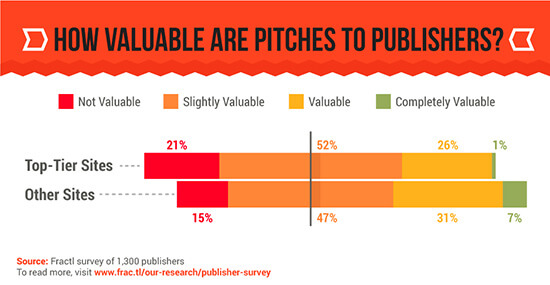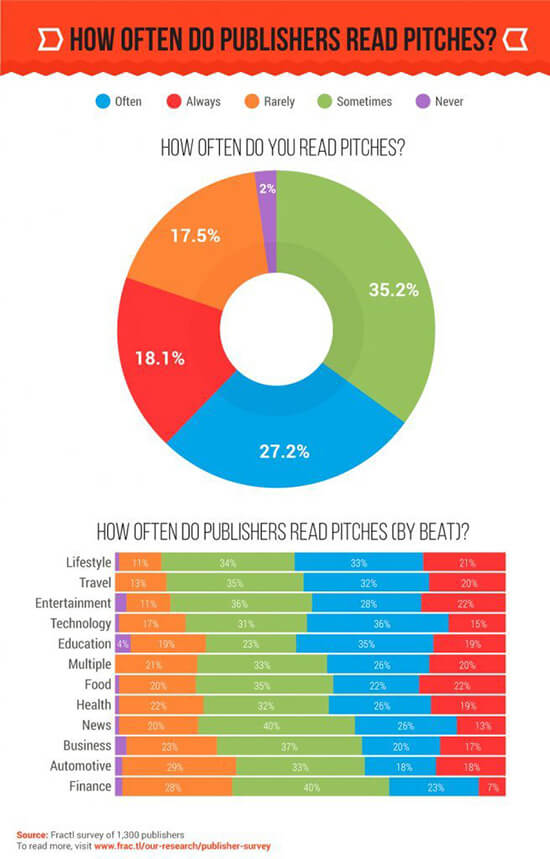 As PR professionals, nurturing intricate relationship with journalists is essential.
As PR professionals, nurturing intricate relationship with journalists is essential.
Media has the potential to reach both broad and niche audiences who often engage and share content within their circle.
The authority of publications and credibility of influencers sharing your content is invaluable for generating top-of-the-funnel brand awareness (among other benefits).
But it can be difficult for your brand to get the attention of a top-tier publication.
Creating stellar content is only half the battle.
Media and influencer outreach is a crucial aspect in making sure your brand and its content get to the right audience.
Considering that top-tier publishers receive hundreds of pitches per week, and writers and editors typically write one story—at most—per day, it’s important to stand out among the sea of mediocre, impersonal, and error-ridden emails.
We’re all constantly trying to improve media relationships and processes, so let’s demystify some burning questions concerning the value of your PR pitch, and determine how to make it more valuable.
By surveying 1,300 writers, editors, reporters, and contributors at countless publications across all beats and authorities, we are able to offer some insight.
Value Varies by Authority and Beat
Authority
Lower-tier sites are more likely to find your PR pitch valuable or even very valuable.
However, nearly 80 percent of top-tier publishers find at least some value in a PR pitch.
Being straightforward and highlighting the value of your content in the pitch will help you stay on the top end of this spectrum.

Beat
A writer’s individual beat will influence the likelihood a PR pitch is even read.
We found food, entertainment, and lifestyle writers are most likely to always read a PR pitch.
But, you may not have such luck with business and automotive writers because nearly 30 percent rarely read pitches.
Overall, 45 percent of publishers mostly read pitches, while only two percent admitted they never read them.
 How to Increase the Value of Your PR Pitch
How to Increase the Value of Your PR Pitch
The good news is there’s some value to your PR pitch across all beats and authorities, and there’s a good chance they will read it.
And there are ways to add value to pitches.
Do: Research the Best Fit Contact
Sending pitches irrelevant to a writer’s beat is the top reason you don’t hear back from the publication.
Four-out-of-five publishers revealed this as their top grievance, so it’s vital to do research before even drafting an email.
This is often the most time-consuming step.
When considering a publication, make sure they publish third-party content and post frequently.
Then check to see which editor or writer covers topics similar to your content.
Becoming familiar with a potential contact’s writing will help tremendously.
This ensures the publication is the best fit for your content, and enables you to establish a personal connection in your pitch.
Don’t: Be Boring or Careless
Two other common reasons for declining pitches are boring emails and careless errors.
Go above and beyond a generic, email template by personalizing each pitch.
Editors and writers will notice and appreciate it.
Start with a personal connection in the introduction.
This helps prove you’ve actually researched this writer, whether it’s commenting on a recent article or mentioning something you both have in common.
Include the most compelling facts in the body of the pitch, and mention why it’s newsworthy and relevant to their audience.
To make a great first impression, be sure to spend time crafting a great subject line that invites them to open your email.
It goes without saying you should triple check your grammar and spelling before clicking send.
Do: Offer In-Demand Content
Photos and mixed media content are the most commonly published formats.
However, among writers, infographics and video are becoming the highest in-demand content types.
There has been a decline in the demand for more traditional forms of content such as news releases.
Beyond content format, other factors which influence the promotional viability of your content are data source, relevance, and emotional appeal.
This the promotional trifecta.
Content based on original data is relevant to a broad audience, having the element of surprise, or emotional factor.
Don’t: Be Overly Promotional
The final reason pitches are commonly declined is because they’re seen as overly promotional.
This type of pitch fails to highlight any value to the publisher, or its readers.
While the content should clearly be related to the publication, it should also bring value to the reader.
Be certain to include the most interesting and relevant information in your PR pitch.
By keeping these tips in mind, you’ll not only earn great media coverage, but also create relationships with influential people.
image credit: pixabay